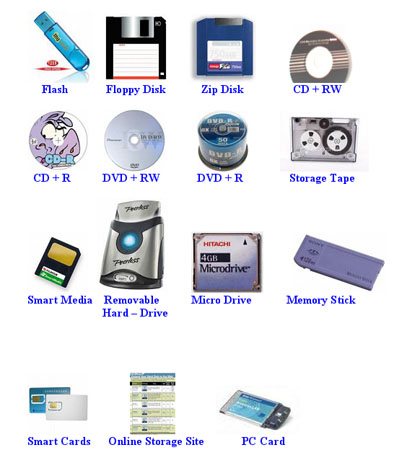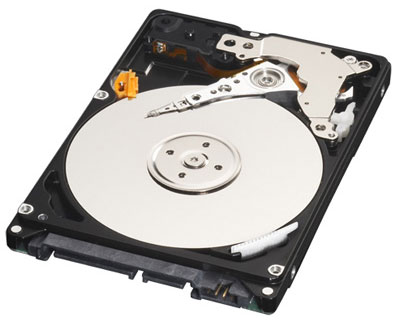Storage Devices


• Hold data and programs permanently.
• Also used when the capacity of the internal storage is insufficient to keep the currently running programs and the data required
• Magnetic storage (Floppy and hard drive) uses a magnet to access data
• Optical storage (CD and DVD drives) uses a laser to access data
• The development of storage started from punch card and to flash drive today.
• The capacity of storage increases from one bit to gigabytes
Punch card - Earliest storage device, Low storage capacity, Holes represent either 1 or 0
Magnetic Tape - High capacity, sequential manner
Floppy - limited storage, Portable, 1.44 Mb storage
Hard disk -High capacity, Fixed inside the machine
Zip disk – portable, more than 100 MB storage
CD and DVD - High capacity, CD - 700MB, DVD - 4200 MB, cost effective (improved Blu-ray (blue laser) format storage can go up to 27 gigabytes)
Flash drive – much portable, storage up to 1 GB
Magnetic Tape - High capacity, sequential manner
Floppy - limited storage, Portable, 1.44 Mb storage
Hard disk -High capacity, Fixed inside the machine
Zip disk – portable, more than 100 MB storage
CD and DVD - High capacity, CD - 700MB, DVD - 4200 MB, cost effective (improved Blu-ray (blue laser) format storage can go up to 27 gigabytes)
Flash drive – much portable, storage up to 1 GB
1 bit = 1 or 0
1 byte = 8 bytes
1 Kilo Byte = 1024 bytes
1 Mega Byte = 1024 kilo bytes
1 Giga byte = 1024 mega bytes
1 KB = 1024 bytes
1 MB = 1,048,576 bytes
1 GB = 1,073,741,824 bytes
1 TB = 1,099,511,627,776 bytes
 ශිල්ප 64
ශිල්ප 64